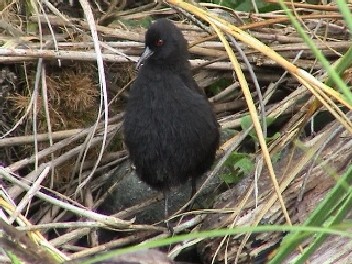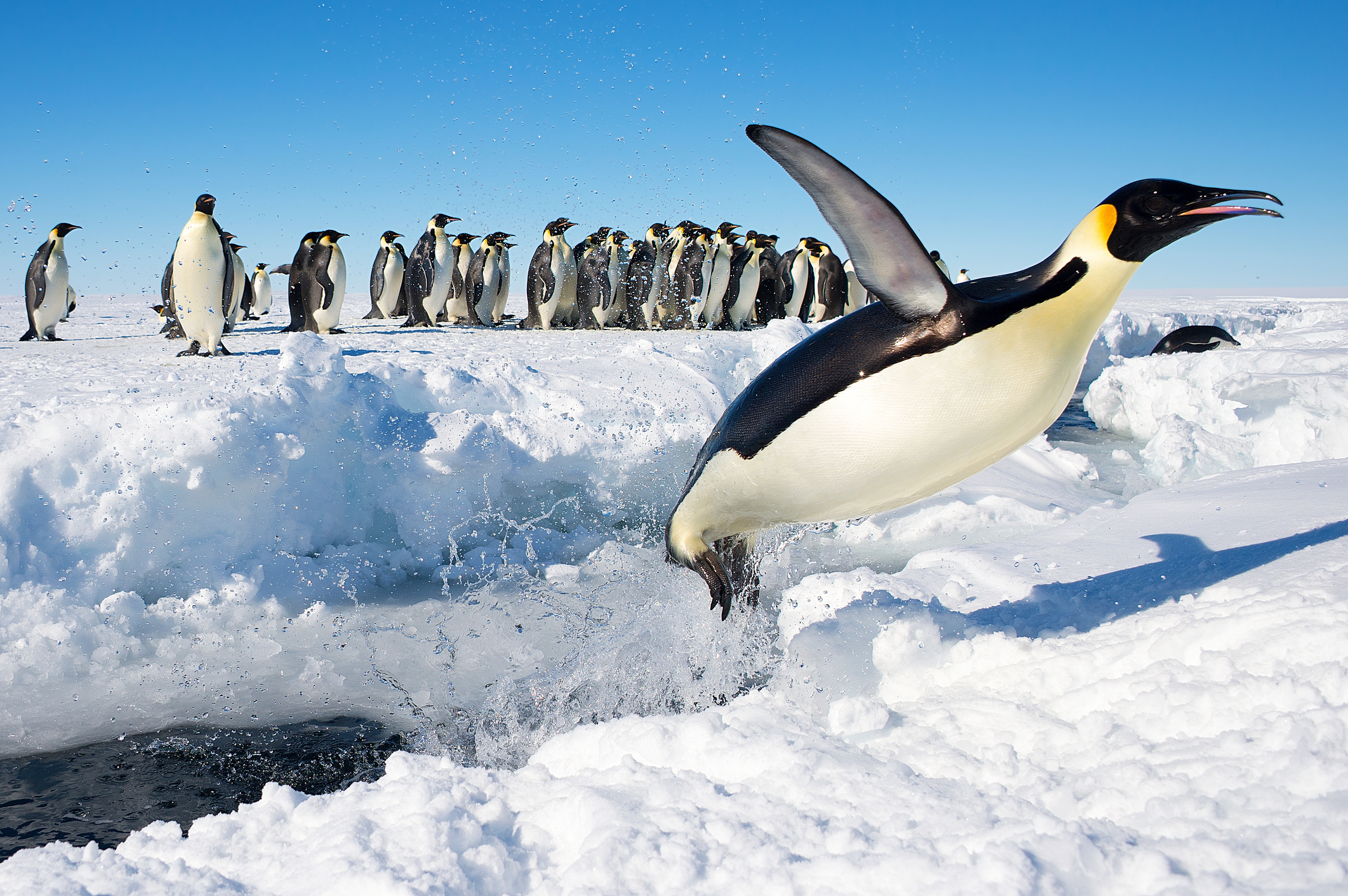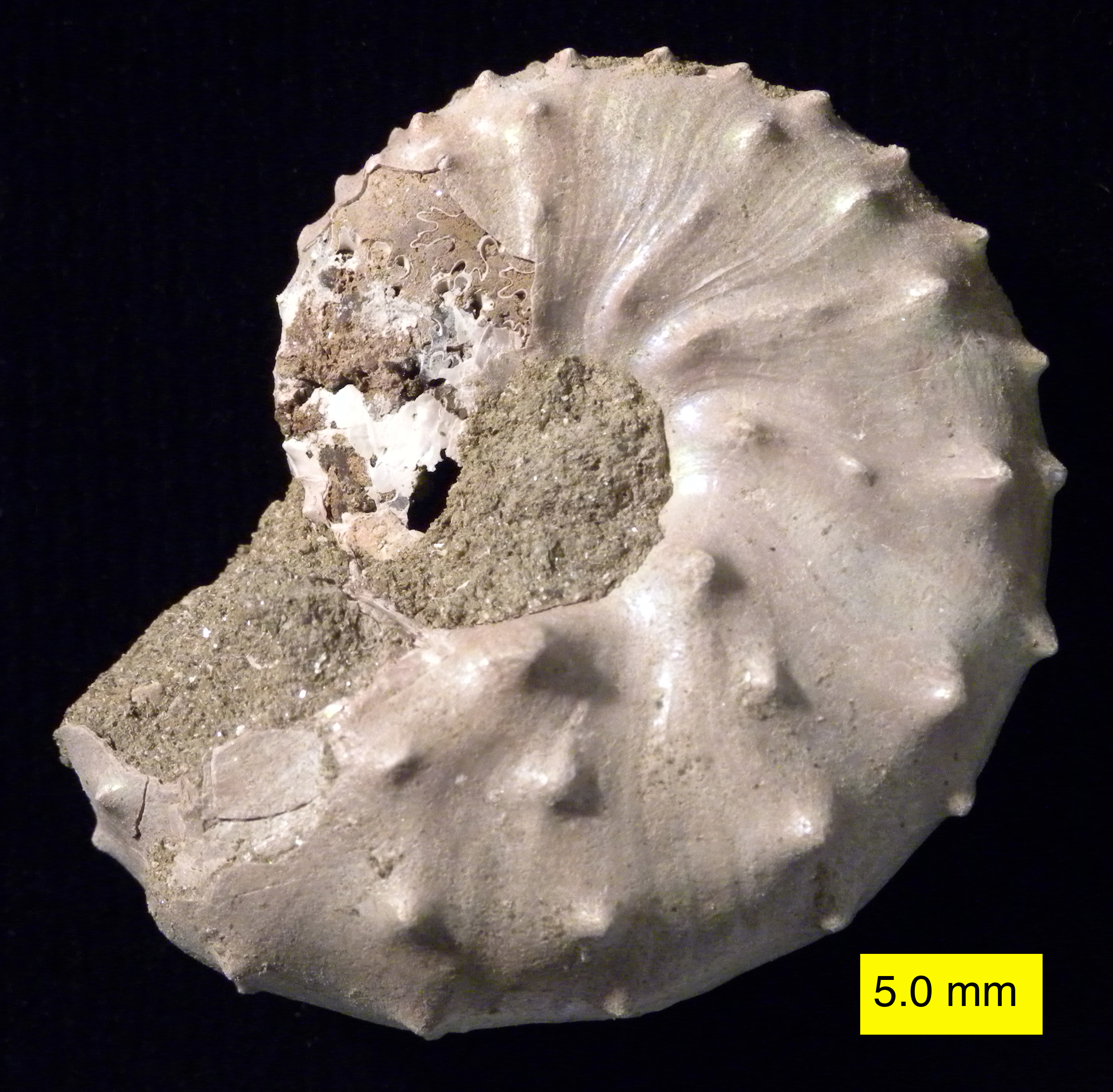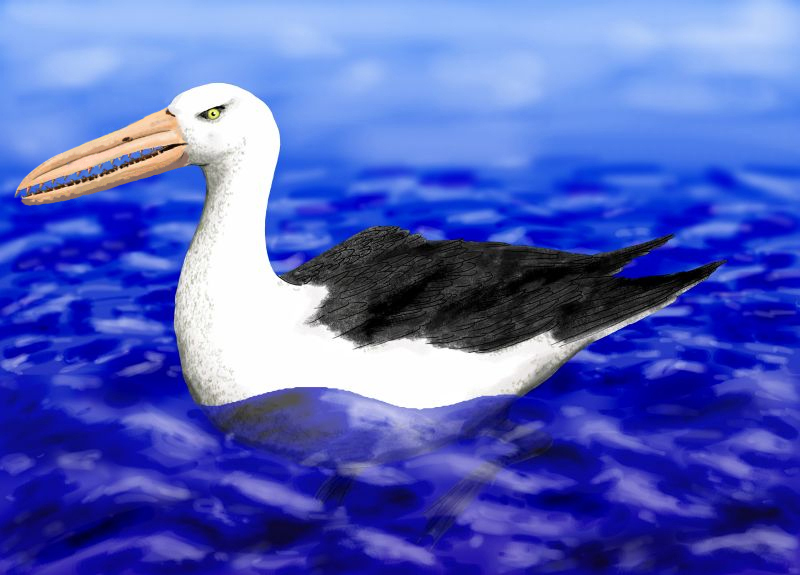|
Flightlessness
Flightless birds are birds that through evolution lost the ability to fly. There are over 60 extant species, including the well known ratites (ostriches, emu, cassowaries, rheas, and kiwi) and penguins. The smallest flightless bird is the Inaccessible Island rail (length 12.5 cm, weight 34.7 g). The largest (both heaviest and tallest) flightless bird, which is also the largest living bird, is the ostrich (2.7 m, 156 kg). Many domesticated birds, such as the domestic chicken and domestic duck, have lost the ability to fly for extended periods, although their ancestral species, the red junglefowl and mallard, respectively, are capable of extended flight. A few particularly bred birds, such as the Broad Breasted White turkey, have become totally flightless as a result of selective breeding; the birds were bred to grow massive breast meat that weighs too much for the bird's wings to support in flight. Flightlessness has evolved in many different birds independently, de ... [...More Info...] [...Related Items...] OR: [Wikipedia] [Google] [Baidu] |
Ratites
A ratite () is any of a diverse group of flightless, large, long-necked, and long-legged birds of the infraclass Palaeognathae. Kiwi, the exception, are much smaller and shorter-legged and are the only nocturnal extant ratites. The systematics of and relationships within the paleognath clade have been in flux. Previously, all the flightless members had been assigned to the order Struthioniformes, which is more recently regarded as containing only the ostrich. The modern bird superorder Palaeognathae consists of ratites and the flighted Neotropic tinamous (compare to Neognathae). Unlike other flightless birds, the ratites have no keel on their sternum — hence the name, from the Latin ''ratis'' (raft, a vessel which has no keel - in contradistinction to extant flighted birds with a keel). Without this to anchor their wing muscles, they could not have flown even if they developed suitable wings. Ratites are a paraphyletic group; tinamous fall within them, and are the sister gro ... [...More Info...] [...Related Items...] OR: [Wikipedia] [Google] [Baidu] |
Origin Of Birds
The scientific question of within which larger group of animals birds evolved has traditionally been called the "origin of birds". The present scientific consensus is that birds are a group of maniraptoran theropod dinosaurs that originated during the Mesozoic Era. A close relationship between birds and dinosaurs was first proposed in the nineteenth century after the discovery of the primitive bird ''Archaeopteryx'' in Germany. Birds and extinct non-avian dinosaurs share many unique skeletal traits. Moreover, fossils of more than thirty species of non-avian dinosaur with preserved feathers have been collected. There are even very small dinosaurs, such as ''Microraptor'' and ''Anchiornis'', which have long, vaned arm and leg feathers forming wings. The Jurassic basal avialan ''Pedopenna'' also shows these long foot feathers. Paleontologist Lawrence Witmer concluded in 2009 that this evidence is sufficient to demonstrate that avian evolution went through a four-winged stage. Fos ... [...More Info...] [...Related Items...] OR: [Wikipedia] [Google] [Baidu] |
Inaccessible Island Rail
The Inaccessible Island rail (''Laterallus rogersi'') is a small bird of the rail family, Rallidae. Endemic to Inaccessible Island in the Tristan Archipelago in the isolated south Atlantic, it is the smallest extant flightless bird in the world. The species was described by physician Percy Lowe in 1923 but had first come to the attention of scientists 50 years earlier. The Inaccessible Island rail's affinities and origin were a long-standing mystery; in 2018 its closest relative was identified as the South American dot-winged crake (''Porzana spiloptera''), and it was proposed that both species should be nested within the genus ''Laterallus''. A small species, the Inaccessible Island rail has brown plumage, black bill and feet, and adults have a red eye. It occupies most habitats on Inaccessible Island, from the beaches to the central plateau, feeding on a variety of small invertebrates and also some plant matter. Pairs are territorial and monogamous, with both parents being r ... [...More Info...] [...Related Items...] OR: [Wikipedia] [Google] [Baidu] |
Penguins Edinburgh Zoo 2004 SMC
Penguins (order Sphenisciformes , family Spheniscidae ) are a group of aquatic flightless birds. They live almost exclusively in the Southern Hemisphere: only one species, the Galápagos penguin, is found north of the Equator. Highly adapted for life in the water, penguins have countershaded dark and white plumage and flippers for swimming. Most penguins feed on krill, fish, squid and other forms of sea life which they catch with their bills and swallow it whole while swimming. A penguin has a spiny tongue and powerful jaws to grip slippery prey. They spend roughly half of their lives on land and the other half in the sea. The largest living species is the emperor penguin (''Aptenodytes forsteri''): on average, adults are about tall and weigh . The smallest penguin species is the little blue penguin (''Eudyptula minor''), also known as the fairy penguin, which stands around tall and weighs . Today, larger penguins generally inhabit colder regions, and smaller pengui ... [...More Info...] [...Related Items...] OR: [Wikipedia] [Google] [Baidu] |
Bird
Birds are a group of warm-blooded vertebrates constituting the class Aves (), characterised by feathers, toothless beaked jaws, the laying of hard-shelled eggs, a high metabolic rate, a four-chambered heart, and a strong yet lightweight skeleton. Birds live worldwide and range in size from the bee hummingbird to the ostrich. There are about ten thousand living species, more than half of which are passerine, or "perching" birds. Birds have whose development varies according to species; the only known groups without wings are the extinct moa and elephant birds. Wings, which are modified forelimbs, gave birds the ability to fly, although further evolution has led to the loss of flight in some birds, including ratites, penguins, and diverse endemic island species. The digestive and respiratory systems of birds are also uniquely adapted for flight. Some bird species of aquatic environments, particularly seabirds and some waterbirds, have further evolved for swimm ... [...More Info...] [...Related Items...] OR: [Wikipedia] [Google] [Baidu] |
Cretaceous–Paleogene Extinction Event
The Cretaceous–Paleogene (K–Pg) extinction event (also known as the Cretaceous–Tertiary extinction) was a sudden extinction event, mass extinction of three-quarters of the plant and animal species on Earth, approximately 66 million years ago. With the exception of some ectothermic species such as sea turtles and crocodilians, no tetrapods weighing more than survived. It marked the end of the Cretaceous Period, and with it the Mesozoic era, while heralding the beginning of the Cenozoic era, which continues to this day. In the geologic record, the K–Pg event is marked by a thin layer of sediment called the Cretaceous–Paleogene boundary, K–Pg boundary, which can be found throughout the world in marine and terrestrial rocks. The boundary clay shows unusually high levels of the metal iridium, which is more common in asteroids than in the Earth's crust. As originally proposed in 1980 by a team of scientists led by Luis Walter Alvarez, Luis Alvarez and his son Walter ... [...More Info...] [...Related Items...] OR: [Wikipedia] [Google] [Baidu] |
Penguin
Penguins ( order Sphenisciformes , family Spheniscidae ) are a group of aquatic flightless birds. They live almost exclusively in the Southern Hemisphere: only one species, the Galápagos penguin, is found north of the Equator. Highly adapted for life in the water, penguins have countershaded dark and white plumage and flippers for swimming. Most penguins feed on krill, fish, squid and other forms of sea life which they catch with their bills and swallow it whole while swimming. A penguin has a spiny tongue and powerful jaws to grip slippery prey. They spend roughly half of their lives on land and the other half in the sea. The largest living species is the emperor penguin (''Aptenodytes forsteri''): on average, adults are about tall and weigh . The smallest penguin species is the little blue penguin (''Eudyptula minor''), also known as the fairy penguin, which stands around tall and weighs . Today, larger penguins generally inhabit colder regions, and smaller penguins in ... [...More Info...] [...Related Items...] OR: [Wikipedia] [Google] [Baidu] |
Eogruidae
Eogruidae (also spelled Eogruiidae in some publications) is a family of large, flightless birds that inhabited Asia from the Eocene to Pliocene epochs. Related to modern ostriches, it was formerly thought to be related to cranes, limpkins and trumpeters and that the similarities with ostriches were due to similar speciations to cursoriality, with both groups showing reduced numbers of toes to two in some taxa.Kurochkin, E.N. 1976. A survey of the Paleogene birds of Asia. Smithsonian Contributions to Paleobiology 27:75-86.Kurochkin, E.N. 1981. New representatives and evolution of two archaic gruiform families in Eurasia. Transactions of the Soviet-Mongolian Paleontologial Expedition 15:59-85. It has been suggested that competition from true ostriches has caused the extinction of these birds, though this has never been formally tested and several ostrich taxa do occur in the late Cenozoic of AsiaMayr, G. (2009). Paleogene fossil birds. Springer. and some species do occur in areas whe ... [...More Info...] [...Related Items...] OR: [Wikipedia] [Google] [Baidu] |
Terror Birds
Phorusrhacids, colloquially known as terror birds, are an extinct clade of large carnivorous flightless birds that were one of the largest species of apex predators in South America during the Cenozoic era; their conventionally accepted temporal range covers from 62 to 0.1 million years ( Ma) ago. They ranged in height from . Their closest modern-day relatives are believed to be the seriemas. '' Titanis walleri'', one of the larger species, is known from Texas and Florida in North America. This makes the phorusrhacids the only known large South American predator to migrate north in the Great American Interchange that followed the formation of the Isthmus of Panama land bridge (the main pulse of the interchange began about 2.6 Ma ago; ''Titanis'' at 5 Ma was an early northward migrant). It was once believed that ''T. walleri'' became extinct in North America around the time of the arrival of humans, but subsequent datings of ''Titanis'' fossils provided no evidence for their s ... [...More Info...] [...Related Items...] OR: [Wikipedia] [Google] [Baidu] |
Bathornithids
Bathornithidae is an extinct family of birds from the Eocene to Miocene of North America. Part of Cariamiformes, they are related to the still extant seriemas and the also extinct Phorusrhacidae. They were likely similar in habits, being terrestrial, long-legged predators, some of which attained massive sizes. It has been suggested that most, if not all, North American Paleogene cariamiforme fossils are part of this group. Storrs Olson also referred the European '' Elaphrocnemus'' to this clade, though it has since been rejected. Conversely, some analysis have instead recovered them as a polyphyletic group, with '' Bathornis'' and kin being sister taxa to phorusrhacids while '' Paracrax'' is rendered closer to modern seriemas, though this assessment is heavily debated.Mayr, G., & Noriega, J. I. A well-preserved partial skeleton of the poorly known early Miocene seriema ''Noriegavis santacrucensis'' (Aves, Cariamidae). ''Acta palaeontologica Polonica'', 60(3):589-598. The mos ... [...More Info...] [...Related Items...] OR: [Wikipedia] [Google] [Baidu] |
Dromornithidae
Dromornithidae, known as mihirungs and informally as thunder birds or demon ducks, were a clade of large, flightless Australian birds of the Oligocene through Pleistocene Epochs. All are now extinct. They were long classified in Struthioniformes, but are now usually classified as galloanseres. Dromornithids were part of the Australian megafauna. One species, '' Dromornis stirtoni'', was tall. Only a single species, '' Genyornis newtoni'' survived into the Late Pleistocene. They are thought to have been herbivorous. The scientific name Dromornithidae derives from the Greek words , ("swift-running") and , ("bird"). Classification The family was named by Max Fürbringer in 1888, citing W. B. Clarke and Gerard Krefft, Owen's separation from ''"Dromaeus"'' and '' Dinornis'', and a note by von Haast allying ''Dromornis'' with ''Dromaeus''. What the nearest relatives of this group are is a controversial issue. For many years it was thought that dromornithids were related to ... [...More Info...] [...Related Items...] OR: [Wikipedia] [Google] [Baidu] |
Geranoididae
Geranoididae is a clade of extinct birds from the early to late Eocene and possibly early Oligocene of North America and Europe. These were mid-sized, long-legged flightless birds.Gerald Mayr (2009). Paleogene Fossil Birds Recent research shows that these birds may actually be palaeognaths related to ostriches. Classification It is rather unambiguous that geranoidids are either part of or stem representatives of Gruoidea, the clade that includes modern cranes, limpkins and trumpeters, though their precise relationship varies among studies, some recovering them as sister taxa to another clade of flightless ratite-like birds, the eogruiids. The most recent consensus appears to be that geranoidids are outside of Gruoidea, with eogruiids being more closely related to modern cranes. However, Mayr (2019) argued that close affinities between Geranoididae and the palaeognathous family Palaeotididae are at least as well supported as the classification of geranoidids into the Gruifo ... [...More Info...] [...Related Items...] OR: [Wikipedia] [Google] [Baidu] |


.jpg)



_21.jpg)

